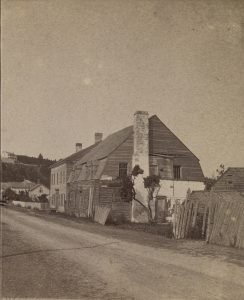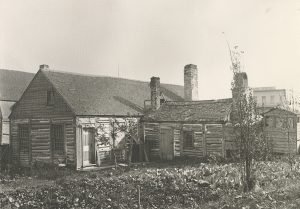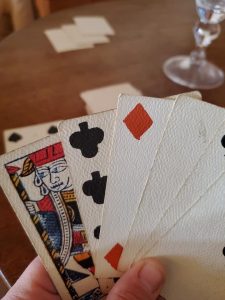

Studying the lives of 19th century people on Mackinac Island often brings us to the work that they did. We know there were soldiers, fur traders, and families living and working together on the island, but what did they do for fun? Luckily for us there are a few clues.
In 1830, a woman named Juliette Kenzie traveled to Mackinac Island on a steamship from Detroit. She was originally from Connecticut and was an experienced traveler. She wrote an account of her excursion and mentioned that while the boat “the ladies played whist” to pass the time.
While on the island itself, Juliette noted that there were many whist parties held at Mrs. Mitchell’s home. Elizabeth Mitchell, a prominent Ojibwa and French-Canadian woman, was very much involved in the work of the fur trade with her husband, Dr. David Mitchell. While David mostly remained in British Canada after the War of 1812, Elizabeth supervised their business on Mackinac Island, and was a leader of the local society. Going to her house for a whist party was probably an event that many Mackinac Island residents in their circle experienced and enjoyed.
Agatha and Edward Biddle lived across the street from the Mitchells, and cards were part of social life in the Biddle household as well. Retail records indicate that Edward purchased cards from the American Fur Company store, located down Market Street. Other Mackinac Island residents also picked up a deck or two from the American Fur Company store, including Fort Mackinac post surgeon Dr. Richard Satterlee and his wife Mary. Other items sold at the store, like violin strings, remind us that early 19th century life on Mackinac Island wasn’t all work.


If you would like to try you hand at whist and experience a popular Mackinac Island card game of the 1820 and 1830s, grab a deck of cards and follow the instructions below. Visit mackinacparks.com for more information about planning your own visit to Mackinac Island, and please consider joining Mackinac Associates, who make many of our programs possible.
– Rules of Whist:
You will need 4 players and a standard 52-card deck. The cards rank from highest to lowest: A K Q J 10 9 8 7 6 5 4 3 2 in each suit. The players play in two partnerships with the partners sitting opposite each other. To decide the partnerships, the players draw cards and the players with the 2 highest cards play against the two lowest. Any comments on the cards between partners is strictly against the rules.
– Shuffling and Dealing:
Any player can shuffle the cards, though usually it is the player to the dealer’s left. The dealer can choose to shuffle last if they prefer. The player on the dealer’s right cuts the cards before dealing. The dealer then passes out 13 cards, one at a time, face down. The last card, which belongs to the dealer, is turned face up and determines trump. The trump card stays face-up on the table until play comes to the dealer. The dealer may then pick up the card and place it in their hand. The deal advances clockwise.
– Play:
The player left of the dealer starts. They may lead with any card in their hand. Play continues clockwise with each player following suit if they can. If they cannot follow suit, any card may be played. The trick is won by the highest card of the suit led, or the highest trump. After each trick is played, its stack of cards should be placed face down near the player who won that trick. Before the next trick starts, a player may ask to review the cards from the last trick only. Once the lead card is played, no previously played cards can be reviewed. The winner of each trick begins the next round. Play continues until all 13 cards are played and then the score is recorded.
– Scoring:
The partners that won the most tricks score 1 point for each trick after 6. The first team to score 5 wins.









